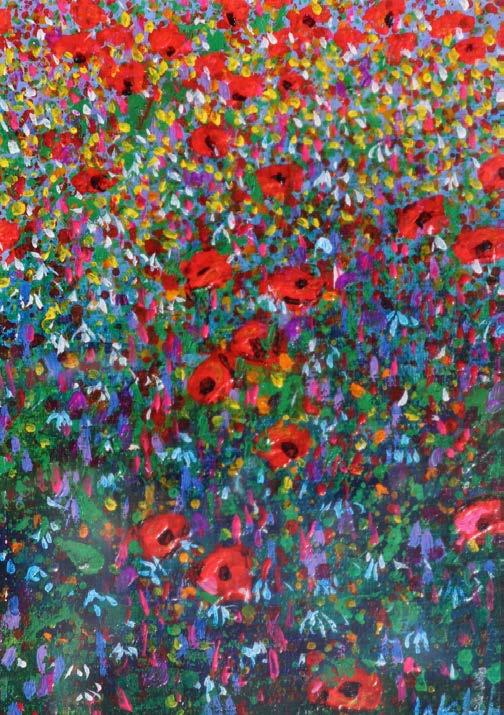
1 minute read
Ivon Hitchens CBE
British, (1893-1979)
Wildflower Wood was acquired soon after it left Hitchens’ studio in the mid 1970s. With its bold greens, pinks and blues, the work bears testament to its painter’s continual development well into his eighties and may well allude to the reciprocal influence that Kenneth Webb’s bright colouring had on the older artist. In contrast, April Haze no. 3 was created during Hitchens’ most celebrated phase as an artist, between representing Britain at the 1956 Venice Biennale alongside Lynn Chadwick and receiving his CBE in 1958.
The doorway to Hitchen’s studio is depicted to the left, surrounded by trees, which emerge out of a panoramic sweep which at first glance appears abstract, an effect emblematic of Hitchens’ entire style. Ivon Hitchens would keep this painting in his studio for well over a decade, until Webb acquired it in the early 1970s. These two works, which have been in Webb’s collection for nearly fifty years, are thus brilliant examples of both artist’s shared goals in colouring and abstraction.
A final consequence of the journey from one artist’s studio to another is the often-forgotten element of a painting’s framing. Hitchens was famously specific about how his works should be framed, specifying that they should remain in the wide-bordered, pale wooden settings that he himself designed. Unfortunately, after his passing, many galleries and owners sought to change these frames to fit ever-changing contemporary tastes, decisions which have resulted in the loss of a great number of these integral parts of the artwork. Yet, precisely because April Haze and Wildflower Wood passed directly from the artist to a close friend, both of their frames have remained in excellent condition. To this day, their survival helps to contextualise and inform the artworks they hold, just as Hitchens intended them to.
These paintings are therefore wonderful examples of the importance that the provenance and journey can have on how we see artworks. Taken independently of their history, these paintings are rich evocations of the power of Hitchens’ craft from his mature to his late phase. Yet it is the addition of their journeys that serves to magnify and enrich their importance and meaning. Not only do both paintings testify to the symbiotic relationship shared by Hitchens and his most important follower, Kenneth Webb, but their direct passing between these artists serves to illustrate important themes of preservation and the common goals of both figures.
The Forenoon
16.5 x 11.5 cms / 6½" x 4½"
16.5 x 11.5 cms / 6½" x 4½"







